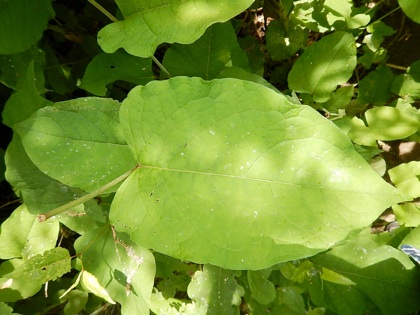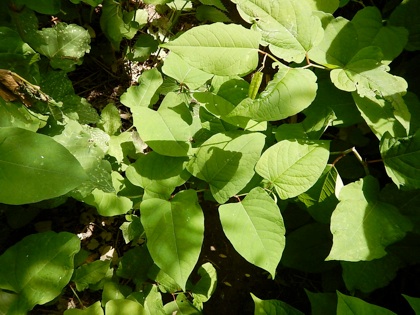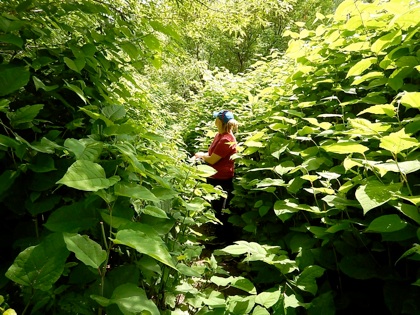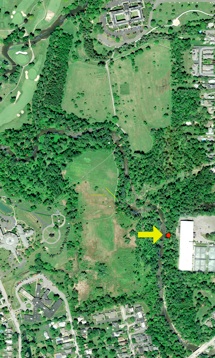favicongohere


Invasive Species in Amherst State Park
Reynoutria japonica - Japanese Knotweed, Japanese Bamboo
Infestation Photo
photo by WNY PRISM
June 5, 2015
photo by WNY PRISM
Jun 5, 2015



Close up Photo
photo by WNY PRISM
June 5, 2015
Knotweed Flowering
September 14, 2015

Japanese knotweed (Reynoutria japonica) is a perennial herbaceous shrub reaching heights of 15 feet with spreading clusters of greenish-white flowers on large, hollow, jointed, mottled stems resembling bamboo, male and female flowers on separate plants. It flowers in the months of of August and September. It is a member of the buckwheat family and was introduced in the late 1800’s to the U.S. from eastern Asia as an ornamental plant. Threatens riparian areas, flood plains and infrastructure by forming dense monocultures. Tall stands of Japanese knotweed can be found along trails of Ellicott Creek along the stream banks and low lying areas. This plant grows rapidly in sunny areas and spreads through rhizomes (underground roots), by seed, or when plant fragments re-establish. Japanese knotweed crowds out native vegetation and interferes with the recreational activities that Amherst State Park visitors enjoy.
There are several management options for Japanese knotweed. Digging and/or pulling may be appropriate for small patches, but care must be taken to remove the entire plant. Plant fragments are able to re-sprout. When using any manual or mechanical removal methods make sure to carefully dispose of all plant fragments by placing them in garbage bags and disposing of them in a landfill. Japanese knotweed may also be treated using herbicide through foliar, stem injection, or cut-stem applications, all of which can be highly effective.






